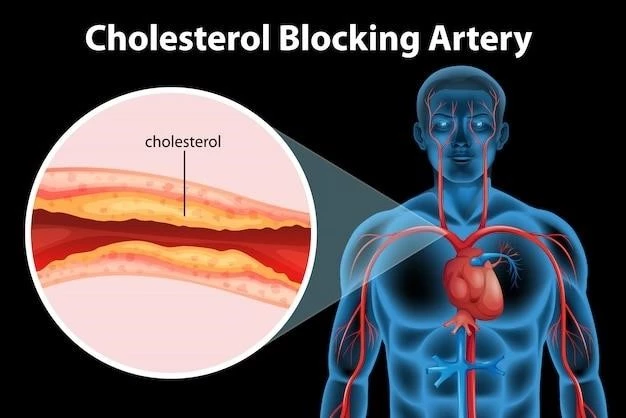Introduction to Vein of Galen Aneurysmal Dilatation (VGAD)
Disease⁚ Vein of Galen aneurysmal dilatation (VGAD)
Overview⁚ VGAD is a type of arteriovenous malformation characterized by a dilated vein of Galen, often leading to high-output cardiac failure. It typically presents in neonates and infants, posing significant morbidity and mortality risks.
Overview of VGAD
Vein of Galen aneurysmal dilatation (VGAD) is a rare condition characterized by a dilated vein of Galen, leading to high-output cardiac failure. It typically affects neonates and infants, presenting with seizures, headache, and developmental delay. VGAD results from arteriovenous shunting of blood and requires distinct therapeutic approaches. The dilated vein of Galen in VGAD can cause various symptoms, including obstructive hydrocephalus, seizures, and intracerebral hemorrhage, with significant morbidity and mortality risks. Treatment often involves endovascular interventions or surgical approaches to manage the complications associated with VGAD.
Clinical Presentation of VGAD
In Vein of Galen aneurysmal dilatation (VGAD), patients often present with symptoms such as seizures, headache, developmental delay, and focal neurological deficits. The condition may manifest as obstructive hydrocephalus, intracerebral hemorrhage, and cardiac complications, requiring prompt diagnosis and targeted management.
Symptoms of VGAD
Patients with Vein of Galen aneurysmal dilatation (VGAD) commonly exhibit symptoms such as seizures, headache, developmental delay, and focal neurological deficits. The manifestations may include obstructive hydrocephalus, intracerebral hemorrhage, and cardiac complications, highlighting the diverse clinical presentation associated with VGAD.
Diagnosis of VGAD
Diagnosing Vein of Galen aneurysmal dilatation (VGAD) typically involves clinical assessment, neuroimaging studies such as CT scans or MRIs, and angiography to visualize the abnormal arteriovenous shunting. The identification of dilated vein of Galen, associated aneurysms, and cardiac manifestations plays a crucial role in confirming the diagnosis and guiding appropriate treatment strategies.
Causes and Pathophysiology of VGAD
Vein of Galen aneurysmal dilatation (VGAD) is primarily caused by arteriovenous shunting of blood, leading to the dilatation of the vein of Galen. This abnormality results from developmental defects during embryogenesis, specifically affecting the median prosencephalic vein, and can lead to significant cardiac and neurological complications.
Developmental Factors of VGAD
Vein of Galen aneurysmal dilatation (VGAD) occurs due to developmental defects during embryogenesis, notably affecting the median prosencephalic vein, leading to its abnormal dilation. This abnormality arises from the failure of proper involution of the median prosencephalic vein, resulting in arteriovenous shunting and subsequent vein of Galen dilatation.
Arteriovenous Shunting in VGAD
Arteriovenous shunting in Vein of Galen aneurysmal dilatation (VGAD) leads to abnormal blood flow patterns, resulting in the overload and dilatation of the vein of Galen. This condition typically involves arteriovenous malformations localized in the subpial space, leading to venous drainage into the vein of Galen and subsequent dilatation. The severity of the dilatation varies based on factors such as outflow obstruction.

Types and Classifications of VGAD
Vein of Galen aneurysmal dilatation (VGAD) can be distinguished from other malformations by its distinct arterial-venous shunting, leading to the dilatation of the vein of Galen. Based on location, VGAD can manifest as supra- or infratentorial AVMs, contributing to variations in clinical presentations and treatment approaches.
Differentiating VGAD from Other Malformations
Vein of Galen aneurysmal dilatation (VGAD) distinguishes itself from other malformations through its unique arterial-venous shunting leading to the dilation of the vein of Galen. This distinct pathophysiology results in specific clinical presentations and necessitates tailored treatment strategies to address the complexities associated with VGAD.
Types of VGAD based on Location
Vein of Galen aneurysmal dilatation (VGAD) presents with arteriovenous malformations localized in the subpial space, either supra- or infratentorially. These malformations result in venous drainage into the vein of Galen, leading to its overload and dilatation; The variations in localization contribute to the diverse clinical manifestations and complexities associated with VGAD.

Treatment Options for VGAD
Vein of Galen aneurysmal dilatation (VGAD) can be managed through endovascular interventions, involving catheter-based procedures to address the arteriovenous shunting and dilatation of the vein of Galen. Surgical approaches may also be utilized to treat complications associated with VGAD and improve patient outcomes.
Endovascular Intervention for VGAD
Endovascular interventions are a common approach for managing Vein of Galen aneurysmal dilatation (VGAD). These procedures, which involve catheter-based techniques, aim to address the arteriovenous shunting and dilatation of the vein of Galen. By targeting the abnormal blood flow patterns, endovascular treatments play a crucial role in improving outcomes for patients with VGAD.
Surgical Approaches for VGAD
Surgical management of Vein of Galen aneurysmal dilatation (VGAD) involves interventions to address complications such as obstructive hydrocephalus and intracerebral hemorrhage. Surgical approaches aim to alleviate symptoms and improve patient outcomes by addressing structural abnormalities related to VGAD.
Prognosis and Complications of VGAD
Patients with Vein of Galen aneurysmal dilatation (VGAD) may face severe complications like obstructive hydrocephalus, intracerebral hemorrhage, and cardiac issues. Proper management of these complications is crucial in improving the long-term prognosis and reducing potential adverse outcomes associated with VGAD.
Long-term Outlook for Patients with VGAD
Patients diagnosed with Vein of Galen aneurysmal dilatation (VGAD) may have varying long-term prognoses based on the management of complications like obstructive hydrocephalus and intracerebral hemorrhage. Proper treatment and follow-up care are crucial in influencing the overall outcomes and quality of life for individuals living with VGAD.
Potential Complications of Untreated VGAD
Untreated Vein of Galen aneurysmal dilatation (VGAD) can lead to severe consequences such as obstructive hydrocephalus, intracerebral hemorrhage, and cardiac issues. Without proper intervention, the condition may result in significant morbidity and potentially fatal outcomes due to complications associated with VGAD.
